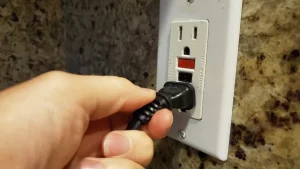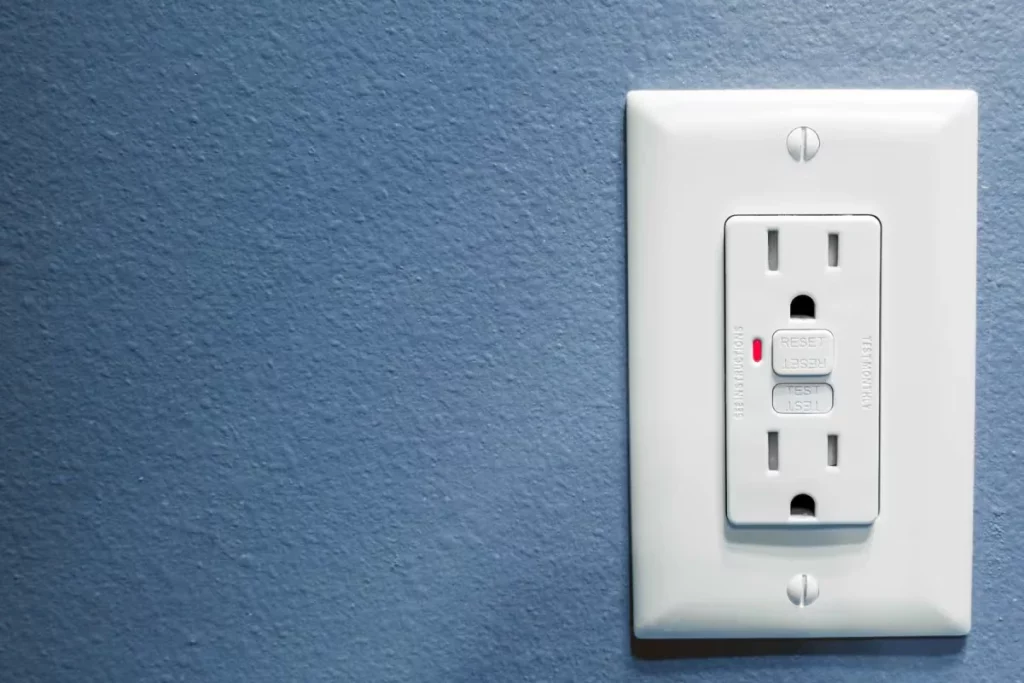GFCI outlets are vital in commercial kitchens due to the high risk of electrical hazards. Their installation requires a clear understanding of safety protocols and technical procedures. By replacing standard outlets with GFCI models, kitchens can greatly reduce the risk of shocks and fires. However, improper installation can lead to serious consequences. Following a GFCI outlet installation guide can help ensure a systematic approach to the installation process, along with awareness of common pitfalls, which is essential for ensuring long-term safety and compliance.
Key Takeaways
- GFCI outlets are crucial in commercial kitchens to prevent electrical shocks and fires, ensuring staff safety and operational efficiency.
- Always turn off the power at the circuit breaker before starting the installation to avoid electrical hazards.
- Follow manufacturer instructions for wiring the new GFCI outlet, paying close attention to line and load connections.
- Regularly test the outlet using the “Test” button and inspect for any signs of wear or damage for long-term safety.
- Schedule professional evaluations to ensure compliance with local building codes and maintain electrical safety standards.
Understanding the Importance of GFCI Outlets in Commercial Kitchens
Although many may underestimate the role of electrical safety in commercial kitchens, the installation of Ground Fault Circuit Interrupter (GFCI) outlets is essential for preventing electrical hazards. GFCI outlets provide critical protection against ground faults, which can lead to severe electrical shocks or fires, particularly in environments where water and electricity frequently interact. These outlets continuously monitor electrical currents, automatically disconnecting power when an imbalance is detected. This proactive measure not only safeguards kitchen staff but also enhances overall operational safety. By integrating GFCI outlets, commercial kitchens demonstrate a commitment to best practices in electrical safety, fostering a secure environment that prioritizes the well-being of all personnel. Consequently, understanding the importance of GFCI outlets is fundamental for maintaining safety standards in culinary settings.
Key Components and Tools Needed for GFCI Outlet Installation
A successful GFCI outlet installation requires specific components and tools to guarantee proper functionality and compliance with safety standards. Key elements include the GFCI outlet itself, which features built-in ground fault protection. Additionally, appropriate electrical wiring, typically 12 or 14 gauge, is necessary to guarantee adequate current flow. Other important components are wire nuts for secure connections and electrical tape for insulation.
As for tools, a voltage tester is essential for confirming safety before installation, while a screwdriver and wire stripper facilitate the connection process. Finally, a drill may be required for mounting. Understanding these key components and tools is significant for anyone seeking to follow this GFCI outlet installation guide effectively.
Step-by-Step GFCI Outlet Installation Process
To initiate the GFCI outlet installation process, one must first ascertain that the power supply to the existing outlet is turned off at the circuit breaker. Following this, the old outlet can be carefully removed, making certain that all wires are noted for reconnection. The new GFCI outlet should then be connected according to the manufacturer’s instructions, guaranteeing proper alignment of the line and load terminals.
The emotional journey of this installation can be summarized as follows:
- Empowerment through hands-on learning
- Safety for loved ones in potentially hazardous areas
- Pride in enhancing home functionality
- Belonging to a community that prioritizes safety
This step-by-step GFCI outlet installation guide guarantees a successful upgrade for any household.
Common Mistakes to Avoid During GFCI Outlet Installation
When undertaking a GFCI outlet installation, several common mistakes can undermine both safety and functionality. One prevalent error is neglecting to turn off the power supply before beginning the installation process, which poses significant electrical hazards. Moreover, improper wiring—such as failing to connect the line and load wires correctly—can lead to ineffective protection against ground faults. Another common oversight involves insufficiently securing the outlet, which may result in loose connections and increased fire risk. Additionally, not adhering to local building codes can lead to compliance issues. Finally, overlooking the importance of testing the outlet after installation may leave potential faults undetected. By recognizing and avoiding these mistakes, individuals can guarantee safer and more effective GFCI outlet installations. This GFCI outlet installation guide emphasizes these critical considerations.
Maintaining GFCI Outlets for Long-Term Safety and Efficiency
Proper installation is only the first step in guaranteeing the reliability of GFCI outlets; regular maintenance is essential for long-term safety and efficiency. Routine checks and testing can prevent potential hazards, fostering a secure environment for all users.
Key maintenance practices include:
- Monthly Testing: Guarantee the GFCI outlet functions correctly by pressing the “Test” button.
- Visual Inspections: Look for signs of wear, such as discoloration or cracks.
- Cleaning: Remove dust and debris that may impede functionality.
- Professional Evaluations: Schedule periodic checks by qualified electricians to assess overall safety.
Frequently Asked Questions
Can I Install a GFCI Outlet Outdoors?
Installing a GFCI outlet outdoors is permissible, provided it is rated for outdoor use and properly weatherproofed. This guarantees safety in wet conditions, reducing the risk of electrical shock and enhancing overall functionality.
How Do I Test if My GFCI Outlet Works?
To test a GFCI outlet, one should press the “Test” button, which should cause the reset button to pop out. Next, pressing the “Reset” button restores power, confirming proper functionality and safety in use.
What Should I Do if My GFCI Outlet Keeps Tripping?
When a GFCI outlet continuously trips, one should examine connected devices for faults, inspect wiring for damage, and consider environmental factors such as moisture. If issues persist, consulting a qualified electrician is advisable for safety.
Are GFCI Outlets Required in Residential Kitchens?
GFCI outlets are mandated in residential kitchens to improve electrical safety. Their installation protects against electrical shock, especially in areas prone to moisture. Compliance with local codes guarantees safety and promotes a secure living environment for residents.
How Often Should I Replace My GFCI Outlet?
Regular inspection of GFCI outlets is essential. It is recommended to replace them every 10 years or sooner if malfunction, ensuring safety and compliance with electrical standards. Consistent maintenance promotes peak performance and reduces potential hazards.
Conclusion
In summary, the installation of GFCI outlets in commercial kitchens is a critical measure for enhancing electrical safety. By adhering to the outlined steps and utilizing the necessary tools, individuals can effectively replace outdated outlets and mitigate potential hazards. Awareness of common installation mistakes and implementing regular maintenance further guarantees the reliability and efficiency of GFCI outlets. Ultimately, these practices contribute to a safer working environment, safeguarding kitchen staff and operations from electrical risks.
You May Also Like:


